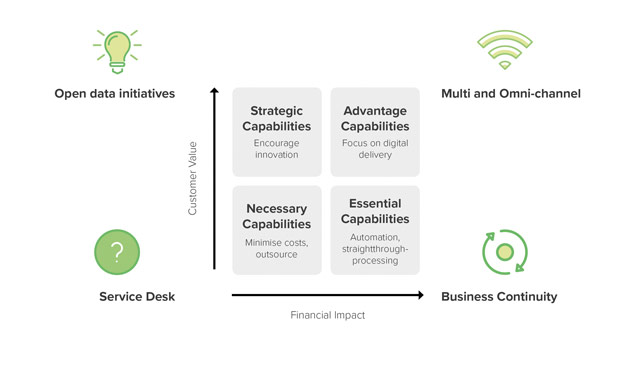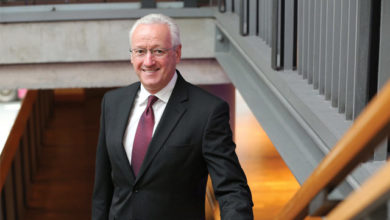Expertise and experience in digital transformation

Gemserv use their experience in the public sector to highlight key areas of focus to give your digital transformation initiatives the greatest chance of success, writes Edward Williams, Head of Digital Transformation at Gemserv.
In this digital era, the goal of many central and local governments is to be customer focused and deliver the best possible public service. To achieve the widespread transformation required to drive this, it is vital to invest in the necessary capabilities to ensure expenditure is concentrated on the appropriate services and systems aligned to a vision and strategy. It is also critical to identify ways of achieving transformation at an accelerated pace.
Gemserv has experience across the public sector spanning over 30 years, helping organisations meet their changing transformational objectives, and delivering the commercial models that underpin them. Our recent work in island jurisdictions, such as the Government of Jersey and the Isle of Man, has overwhelmingly focussed on digital transformation, meeting the expectation from citizens that their public services should be as good as their digital experiences in the private sector. This is the benchmark that the public now expects, or will simply shop elsewhere if they don’t like what is on offer.
Drivers for Public Digital Services
Customers cannot readily go elsewhere to consume public services, though public servants are subject to rigorous scrutiny and accountability, and the final sanction of the ballot box. Often legislative and regularity change, coupled with challenging budgetary constraints, means that government must increasingly deliver more with less.
We met this challenge with the Government of Jersey by delivering services to citizens through digital channels – eGovernment. Gemserv was engaged to establish a Design Authority and apply this capability across government to ensure consistency in the delivery of enhanced services, in line with the vision and strategic direction of Government of Jersey. The aims were to:
- design services around the user to be better, quicker, simpler;
- improve efficiency across government;
- increase transparency, visibility and accessibility of information; and
- support the building of local digital capabilities and the local economy.
Prior to our involvement, there was no such Design Authority capability, and neither the mechanisms nor the governance to ensure government services were designed within a common framework, aligned to a strategic direction. This had led to inconsistency in service delivery, in the sharing of information, and to significant duplication of technology solutions.
Much of our work delivered the architecture and the governance framework for reducing this complexity, as well as delivering the core digital platform components to manage identity, establish corporate data assets and provide enterprise-wide systems integration to share data between back-office functions and legacy applications.
Our experience of this work has also shaped our thinking regarding two key questions government should be asking itself, and the areas of focus that will ensure a successful digital transformation.
Focus on strategy
Who champions digital change within your organisation? For success, this should be firmly anchored in the C-Suite, and the overarching business strategy for your organisation should be digitally focussed. This is vital, given it is the business strategy which will be shaped directly by the most senior leaders, and will provide an accurate gauge to their commitment. A strategy that points to digital ways of working throughout the organisation, setting digital as the keystone to realising business objectives, provides a much stronger platform than one that focuses only on specific areas of the organisation.
We have witnessed first-hand the dramatic effect of moving from a localised digital strategy to one which is driven from the top. A digital strategy anchored firmly within the Information Services department was able to set out the approach for:
- a modern and collaborative IT office environment and the upskilling of staff to use it;
- use of Cloud services for core functions and the introduction of innovative technologies; and
- exclusive use of a digital platform to deliver frontline services to citizens.
Each of these laudable, fundamentally technology focussed, aims did not transform government. It was only a change of leadership at the top of government, and the subsequent drive for digital throughout all aspects of the organisation that started to deliver transformation change, focussing on:
- organisational redesign around the most critical services citizens use;
- a one-stop-shop for all face-to-face customer services; and
- a focus on cultural change within government to adopt digital ways of working.
The former provided the digital tools, the latter the transformation. With both together, government can become more agile and responsive.
The final piece in this jigsaw is your commercial strategy, which also needs to align closely with your digital objectives. We have seen commercial models that have slowed things down, especially where procurements are based around products and solutions.
Focus on strengthening and procuring capabilities
How do you identify commonality across governments and deliver consistent experiences to customers? Modern governments understand their capabilities, i.e. ‘what’ they do as opposed to ‘how’ they do it, and model them as a means for translating strategy into action. At a very simple level there are large degrees of similarity between different types of organisation (for example customer service, risk management, horizon scanning), all of which are business capabilities. It is not unusual to procure the capabilities you are missing, either embedding them within your organisation, or by outsourcing them.
They can also be categorised (Figure 1) which makes them a powerful tool in identifying how to maximise value, reduce risk and increase efficiency. The capabilities that deliver most customer value are those that are most suitable to innovate through digital technologies, such as Artificial Intelligence or Blockchain, or to focus on delivering digitally with a consistent user experience.
A predominant feature of digital is cadence, iterating through several small releases, and adopting a “fail fast” approach. It can be difficult to bottom out exactly what the end-state requirements are at the start of a procurement cycle. The procurement approach needs to be adaptable, attuned to an agile delivery, or it can lead to poor value decisions being made or a decision to buy a solution too early. One answer is to focus on procuring capability, such as service design, rather than the more traditional approach of buying a solution.
There is often a tendency to focus on the technology aspects of digital transformation. This achieves a degree of digitalisation but no meaningful transformation, buying solutions rather than change. Our experience highlights two areas of focus to ensure you maximise the value of your digital journey, and it is vital that your procurement strategy mirrors these.
Fitzwilliam Hall Business Centre
Fitzwilliam Place, Dublin 2
T: +353 (0)1 669 4630
E: info@gemserv.com







